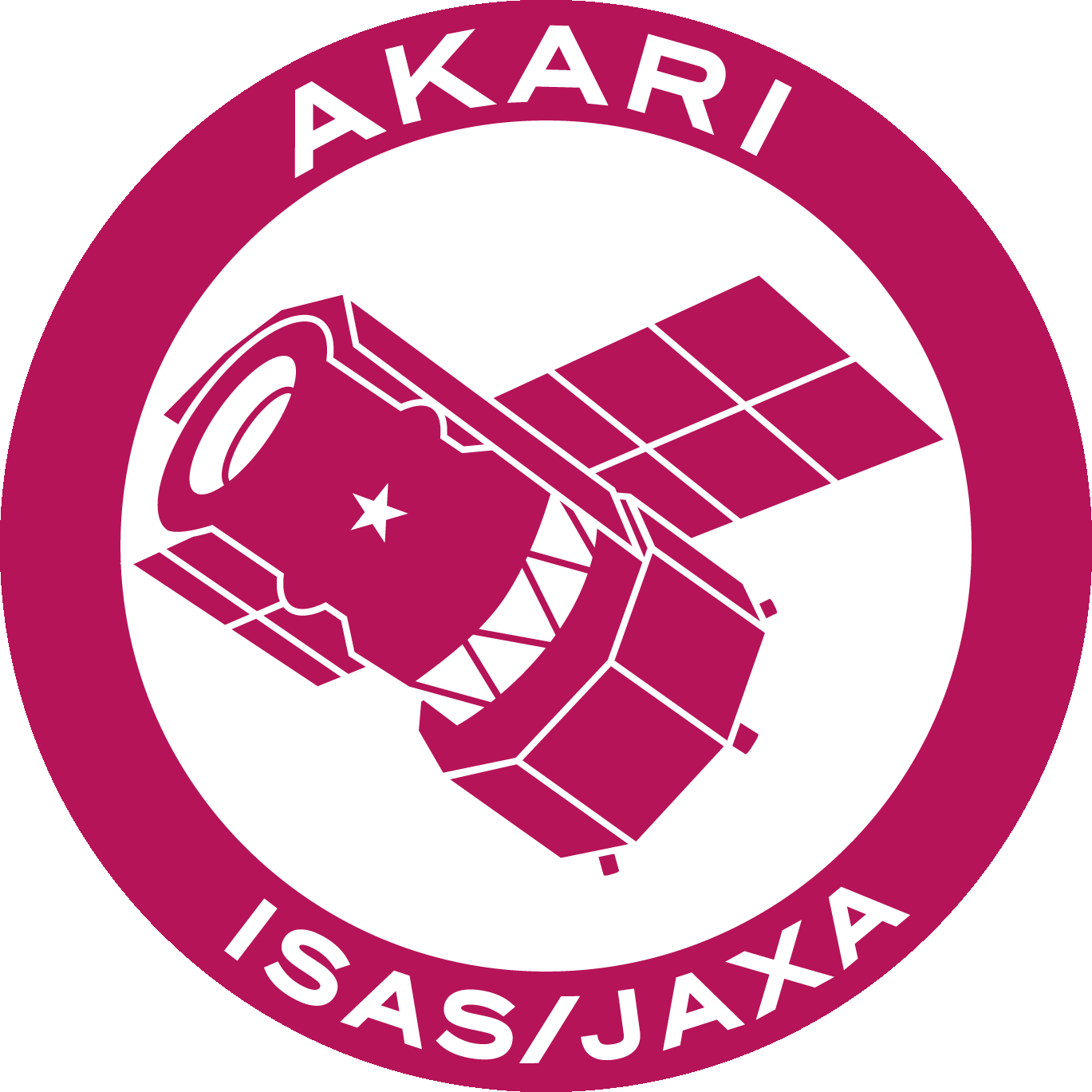Outline of Satellite
Outline
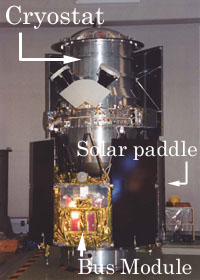
The AKARI satellite consisted of a cryostatA container to keep instruments low temperature. and a bus module. A telescope and scientific instruments were stored in the cryostat and cooled by liquid Helium and mechanical coolers. The bus module took care of house keeping of the satellite, attitude control, data handling, and communication with the ground system. The height and weight of the satellite were 3.7 meters and 952 kg, respectively. The cryostat and the bus module had independent structures so as to decrease heat inflow into the cryostat.
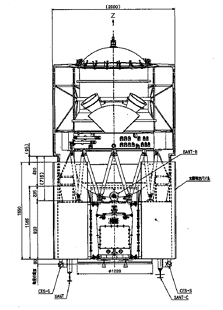
The solar paddle which supplied electric power to the satellite was extendedThe width of the solar paddle was about 5.5m when extended. in the orbit. The cryostat had an aperture lid on the ground so as to keep a tight vacuum and prevent stray light inflow. This aperture lid was ejected in space after establishment of the attitude of the satellite.
AKARI was launched by the M-V launch vehicle No.8 which had also been developed by ISAS/JAXA. The operation after the launch was performed principally at Sagamihara Space Operation Center (SSOC) and Uchinoura Space Center (USC).
Telescope

The AKARI telescope was a Ritchey-Chretien system with F/6.1. The focal length was 4200 mm and effective aperture was 68.5 cm. The entire telescope was cryogenically-cooledThe temperature of the telescope was maintained at 5.8K (-267.4℃) during observations. during observations. The aim of the cooled telescope was to suppress harmful thermal radiationElectromagnetic wave radiated by all matter corresponding to its temperature. radiated from telescope itself.
The telescope was composed of a primary mirror, a secondary mirror, trusses which supported the secondary mirror, and baffles which prevent stray lightUnwanted light which does not passed through the expected route but arrives at the focal plane. e.g. scattered light.. The trusses were made of Beryllium (Be) metal. Beryllium is a material with light weight and good thermal conduction.
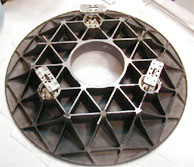
The primary mirror was made of SiC (Silicon Carbide), a lightweight and rigid material. The back side of the mirror was hollowed out in order to make it lighter. The actual weight of the 71 cm (effective diameter is 68.5 cm) primary mirror was only 11 kg. This was the first time a SiC mirror flew in space.
The surface of the primary mirror was coated by Gold (Au) in order to increase the reflectance at infrared wavelength.
Cryostat
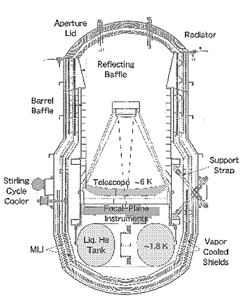
170 liter of superfluid liquid Helium (at launch time) was loaded into the tank of the cryostat and cooled the instruments and the telescope down to a very low temperatureThe far-infrared detector for longer wavelength operated at a lowest temperature of less than 2K (-271.2℃)..
Two sets of Stirling-cycle mechanical coolers were incorporated in addition to the liquid Helium. The addition of the mechanical coolers extended the Helium life and reduced the quantity of Helium to be carried into space. AKARI made observations for one and a half years keeping a very low temperature using both liquid Helium and the mechanical coolers.


